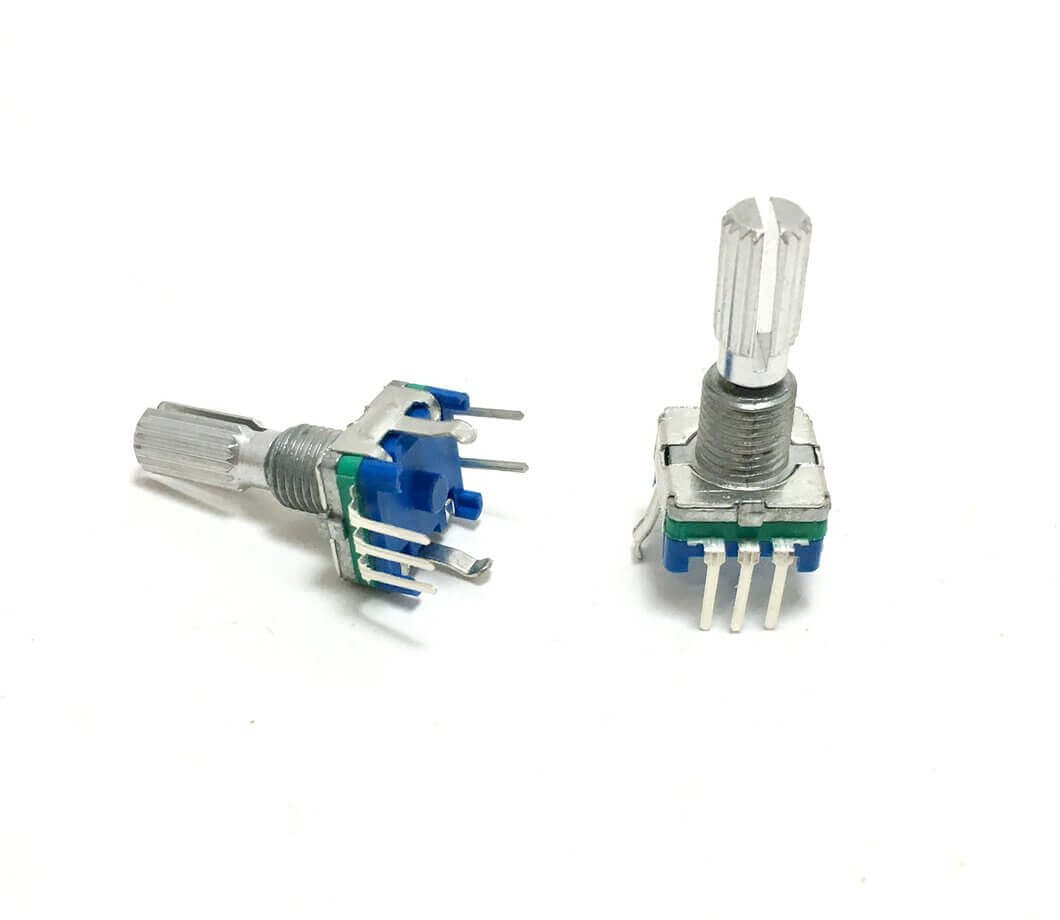
In this post, we will understand about Rotary Encoder as well as its types. We will also learn about Construction & Working. Separately from all this the applications, advantage & disadvantage of Rotary Encoder is also described.
A rotary encoder is a sort of position sensor used to decide a rotating shaft’s precise situation. It produces an electrical sign, either digital or analog, as per the rotary movement.
Rotary encoders are electromechanical gadgets utilized for detecting in horde applications — on engines matched with drives and mechanized hardware for everything from consumer electronics, lifts, and transport speed observing to position control on automated modern machines and robotics. They track the Rotary of engine shafts to produce advanced position and movement data. Whether incremental or absolute, digital or optical, Rotary encoders track engine shaft revolution to produce digital position and movement data. Their use multiplies in mechanical and commercial designs.
A rotary encoder, additionally called a shaft encoder, is an electromechanical gadget that changes over the precise position or movement of a shaft or axle to a digital or analog output signal. There are two primary sorts of rotary encoders: transducer and absolute. The yield of an outright encoder demonstrates the current shaft position, making it an angle transducer. An incremental encoder’s output gives data about the shaft’s movement, which is regularly handled somewhere else into data, for example, position, distance, and speed.
Rotary encoders are indicated for structure factor, level of toughness, and resolution. For incremental encoders, the resolution is characterized as checks per turn. For total single-turn encoders, it is positions per turn, communicated as a multi-bit word. Multi turn encoders (those that track over numerous 360° turns) are indicated in positions per input-shaft turn and the quantity of inward gear-ratio turns.
The required resolution relies upon the number of positions requiring estimation. If a machine should gauge the movement of a 25-in. leadscrew in additions of 0.001 in., for instance, at that point, it requires an absolute encoder with a goal of 25,000 points. The resolution here is typically characterized regarding pieces: A 12-cycle encoder, for instance, alludes to the binary number 212 that is 4,096 decimal. In this way, a 12-digit encoder has a resolution of 4,096 points.
Rotary encoders are utilized in a broad scope of applications requiring observing or control, or mechanical systems, including industrial controls, applications, photographic lenses, and PC input gadgets, such as optomechanical mice trackballs, controlled pressure rheometers, and Rotary radar platforms.
Types of Rotary Encoders
1. Mechanical Absolute Rotary Encoders
An absolute rotary encoder gauges an absolute angle of the encoded shaft by having an interesting code for each shaft position. With that, each position of the estimation range/point is being distinguished by a specific code on a plate. This implies the requirement for counters as positional qualities are in every case directly accessible in any event when power is taken out from the encoder.
2. Optical Absolute Rotary Encoders
Optical absolute rotary encoders are developed with glass or plastic material plates with transparent and misty surface zones to permit the light source and photodetector to recognize optical patterns. Such identification helps in deciding the disc position anytime.
3. Magnetic Absolute Encoders
Magnetic absolute encoders are developed with magnetic poles’ progression to speak to encoder position and sensors, commonly Hall Effect or magnetoresistive. It shares a comparative working principle of optical encoders, yet sensors identify a change in magnetic fields rather than light.
4. Incremental Encoder
Incremental encoders work by perusing the progressions in precise dislodging instead of perusing the encoded shaft’s absolute point. An incremental encoder will promptly report any adjustments in position. They are appropriate for applications that require precise detailing of position changes. Increment encoders do not trace the absolute position. They may be moved to a fixed reference highlight to initiate the position estimation. A Rotary incremental encoder has two signals, A and B, that issue square waves when the encoder shaft rotates.
How Rotary Encoder Works?
The encoder has a disk with equitably dispersed contact zones associated with the normal pin C and two other separate contact sticks A and B. When the plate begins rotating bit by bit, the pins A and B will start connecting with the common pin, and the two square wave output signs will be created likewise.
Any of the two outputs can be utilized to decide the rotated position on the off chance to check the sign’s beats. Nonetheless, if we need to determine the turn heading, we need to simultaneously think about the two signals. We can see that the two output signals are dislodged at 90 degrees out of stage from one another. If the encoder is rotating clockwise output, A will be in front of output B.
So, on the off chance that we check the means each time the sign changes, from Low to High and Peak to Low, we can see that the two output signals have inverse values. The other way around, if the encoder is Rotary counter-clockwise, the output signals have equivalent values. So, thinking about this, we can undoubtedly program our regulator to peruse the encoder position and the rotation direction.
Applications of Rotary Encoders
Rotary encoders are utilized in applications that need checking and control of mechanical systems. Such applications need the input of position, speed, distance, and so on. Rotary encoders are broadly utilized in assembly machines, bundling, printers, testing machines, CNC machines, naming machines, advanced mechanics, boring machines, and so forth. They are exceptionally accurate and reliable and help give excellent feedback cost-adequately as per observation by AES International. Rotary encoders can be integrated into already present applications and have a minimized size.
Benefits & Drawbacks of Rotary Encoders:
– Benefits of a Rotary Encoder
1. Profoundly accurate and reliable
2. Minimal effort feedback
3. High goal
4. Integrated electronics
5. Circuits optical and digital innovation
6. Can be consolidated into existing applications
7. Smaller size
– Drawbacks of a Rotary Encoder
1. Subject to magnetic or radio impedance (Magnetic Encoders)
2. Direct light source obstruction (Optical Encoders)
3. Defenseless to the soil, oil, and residue contaminates

A tech-savvy writer with a knack for finding the latest technology in the market, this is what describes John Carter. With more than 8 years of experience as a journalist, John graduated as an engineer and ventured soon into the world of online journalism. His interest includes gadget reviews, decoding OS errors, hunting information on the latest technology, and so on.


















